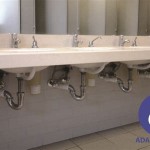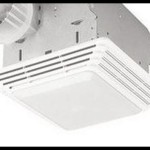Bathroom Vanity Units: Optimizing Space in Cloakrooms
The cloakroom, often the smallest bathroom in a house, presents a unique set of design challenges. Maximizing functionality without compromising aesthetics is paramount. Bathroom vanity units designed specifically for cloakrooms offer an efficient solution, combining essential features like a sink and storage into a compact, stylish package. This article explores the key considerations when selecting a vanity unit for a cloakroom, focusing on space optimization, style, and practicality.
A cloakroom, typically situated near the entrance or living areas, often serves as a guest bathroom. Therefore, its design should reflect the overall style of the home while providing a convenient and hygienic space for visitors. The limited dimensions of a cloakroom necessitate careful planning and the selection of fixtures that are appropriately scaled. Vanity units, in this context, play a critical role in achieving both functionality and visual appeal.
The primary function of a cloakroom vanity unit is to provide a washing area. This includes a sink, faucet, and potentially, space for soap and hand towels. However, the unit also offers valuable storage, which is crucial in a small space where clutter can quickly accumulate. The intelligent design of cloakroom vanity units aims to incorporate these elements in a cohesive and space-saving manner.
Space Optimization Strategies for Cloakroom Vanity Units
Given the restricted floor area in a cloakroom, the dimensions of the vanity unit are of utmost importance. Wall-mounted vanity units are a popular choice as they create the illusion of more space by allowing the floor to be visible underneath. This also simplifies cleaning, as there are no tight corners to navigate with a mop or vacuum cleaner.
Corner vanity units are another excellent option for maximizing space utilization. These units effectively utilize otherwise unused corners, freeing up valuable floor space for other fixtures or movement. They are particularly suitable for cloakrooms with irregular shapes or limited wall space.
Slimline vanity units, characterized by their shallow depth, are specifically designed for tight spaces. While they may offer less storage than deeper units, they minimize protrusion into the room, making them ideal for cloakrooms where every inch counts. The internal storage can still be optimized with clever shelving and organizational systems.
The placement of the vanity unit within the cloakroom is also crucial. It should be positioned in a location that minimizes obstruction to doorways and walkways. Careful consideration should be given to the swing of the door and the placement of other fixtures, such as the toilet and towel rail, to ensure a comfortable and functional layout.
Style and Design Considerations for Cloakroom Vanity Units
Beyond functionality, the vanity unit contributes significantly to the overall aesthetic of the cloakroom. The design should complement the style of the home and create a welcoming atmosphere for guests. A wide range of styles, materials, and finishes are available to suit different preferences.
Modern cloakroom vanity units often feature clean lines, minimalist designs, and sleek hardware. These units typically incorporate materials such as gloss white acrylic, glass, and chrome, creating a contemporary and sophisticated look. They are well-suited for homes with a modern or minimalist aesthetic.
Traditional vanity units, on the other hand, may feature ornate detailing, classic hardware, and natural materials such as wood or stone. These units exude a sense of elegance and charm, making them ideal for homes with a more traditional or period style. The choice of finish, such as a distressed paint or rich wood stain, can further enhance the traditional aesthetic.
Transitional vanity units bridge the gap between modern and traditional styles, incorporating elements of both. These units often feature clean lines with subtle detailing, and they may combine materials such as wood and metal. They offer a versatile option that can complement a wide range of interior design styles.
The choice of countertop material is another important consideration. Quartz, granite, and marble are popular options due to their durability, water resistance, and aesthetic appeal. Solid surface materials, such as Corian, offer a seamless and hygienic surface that is easy to clean. The color and pattern of the countertop should complement the overall design of the vanity unit and the cloakroom.
The faucet selection should also align with the style of the vanity unit and the overall aesthetic of the cloakroom. A variety of faucet styles are available, ranging from sleek and modern to traditional and ornate. The finish of the faucet should coordinate with the hardware on the vanity unit and other fixtures in the room. Considerations such as water efficiency and ease of use should also be taken into account.
Practicality and Functionality of Cloakroom Vanity Units
While style is important, the practical aspects of a cloakroom vanity unit should not be overlooked. The unit should be durable, easy to clean, and provide adequate storage for essential items. The height of the vanity unit should also be considered to ensure comfortable use for all users.
The storage space within the vanity unit should be organized to maximize efficiency. Shelves, drawers, and compartments can be used to store items such as toilet paper, hand towels, cleaning supplies, and toiletries. Consider using drawer dividers or organizers to keep items neatly arranged and easily accessible.
The sink basin should be appropriately sized for the cloakroom. A small, shallow basin is often sufficient for hand washing. However, if the cloakroom is also used for other purposes, such as washing hands after gardening, a larger, deeper basin may be more appropriate. The shape of the basin can also impact the overall aesthetic of the vanity unit.
Lighting is an essential element in any bathroom, and the cloakroom is no exception. Adequate lighting should be provided around the vanity unit to ensure sufficient visibility for tasks such as washing hands and applying makeup. Consider incorporating a mirror with integrated lighting or adding a separate wall-mounted light fixture above the vanity unit.
The material of the vanity unit should be water resistant and durable enough to withstand the humid environment of a bathroom. Solid wood, engineered wood with a water-resistant finish, and moisture-resistant MDF are all suitable options. The hardware, such as hinges and handles, should also be made from durable materials that will not rust or corrode.
Installation of the vanity unit should be carried out by a qualified professional to ensure proper plumbing connections and secure mounting. Incorrect installation can lead to leaks, damage to the unit, and potential safety hazards. It is also important to follow the manufacturer's instructions carefully during installation.
Choosing the right vanity unit for a cloakroom involves a careful balance of space optimization, style, and practicality. By considering these factors, it is possible to create a functional and aesthetically pleasing space that enhances the overall appeal of the home.

Compact Oak Cloakroom Vanity Unit With Basin Sink Bathroom Inspire Mobel

Hampton Cloakroom 450mm Vanity Unit Basin In Six Colours

Maisie Compact 400mm Mini Cloakroom Floorstanding Vanity Unit With Black Handle Overflow Cover Basin Gloss White Drench

Maisie Compact 400mm Mini Cloakroom Wall Hung Vanity Unit Basin Anthracite Tap Warehouse

Lomond 400 Cloakroom Vanity Unit Storm Blue Highlife Bathrooms 57103

Maisie Compact 400mm Mini Cloakroom Vanity Unit With Basin Medium Oak Tap Warehouse

Duo 500mm Slimline Cloakroom Vanity Unit Basin In White

Bathroom Cloakroom Corner Vanity Unit Basin Sink Small Wall Hung Cabinet Grey

Maisie Compact 400mm Mini Cloakroom Wall Hung Vanity Unit With Black Handle Overflow Cover Basin Gloss White Drench

Mode Lois Graphite Cloakroom Vanity Unit And Ceramic Basin 550mm At Victoriaplum Com
Related Posts







